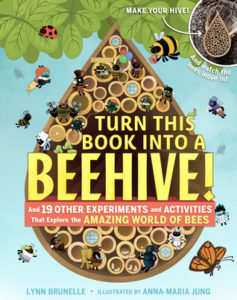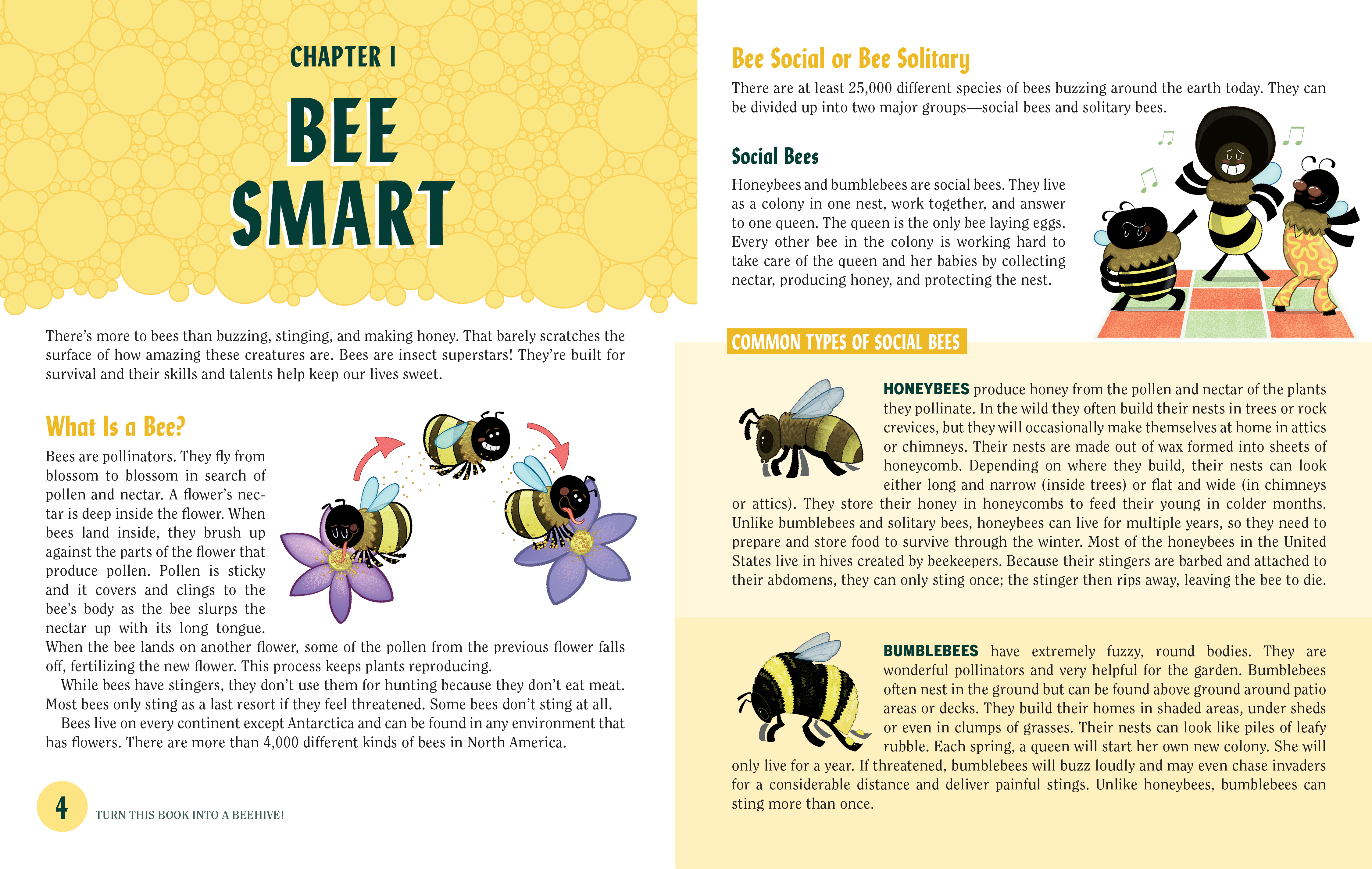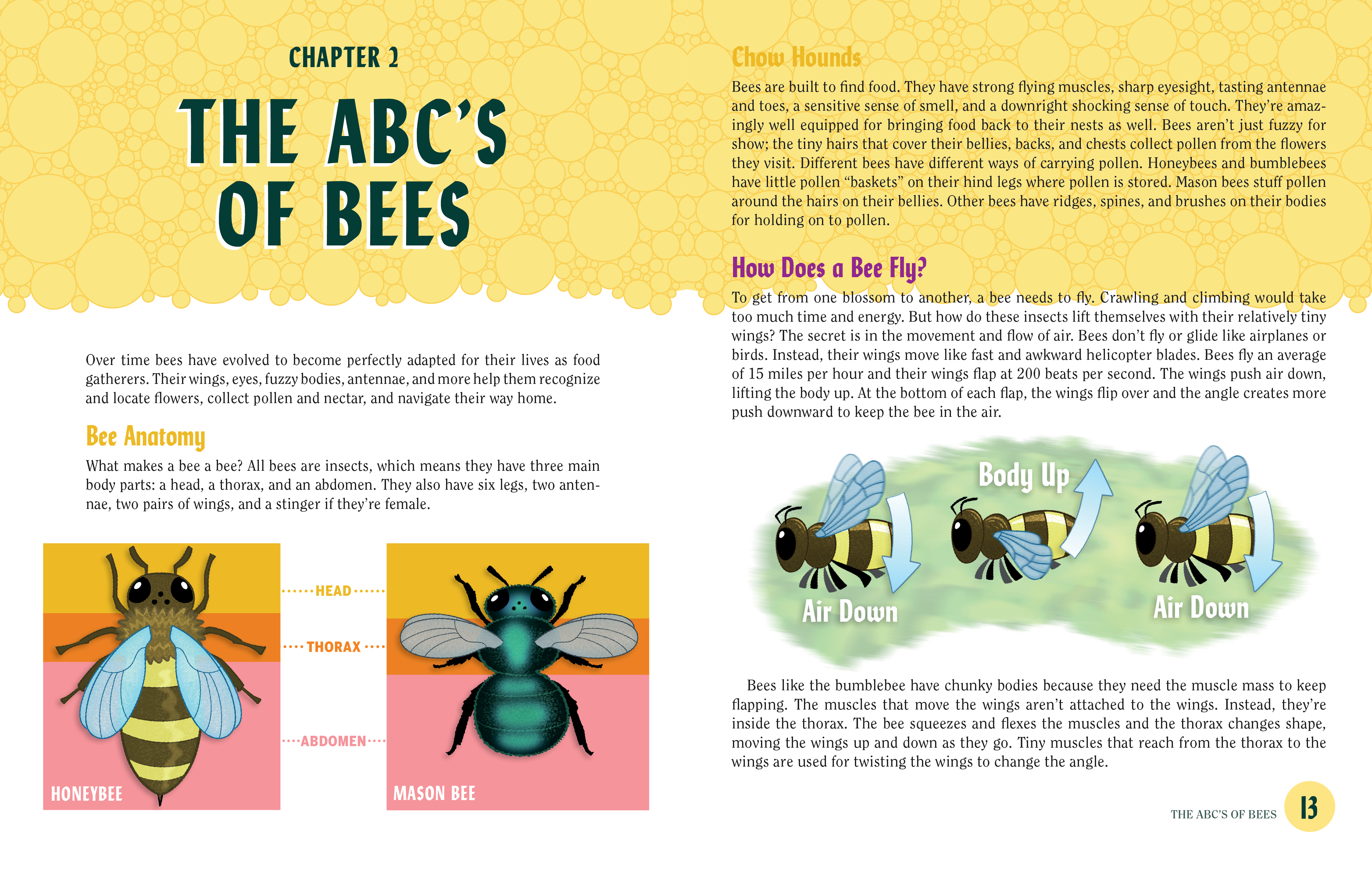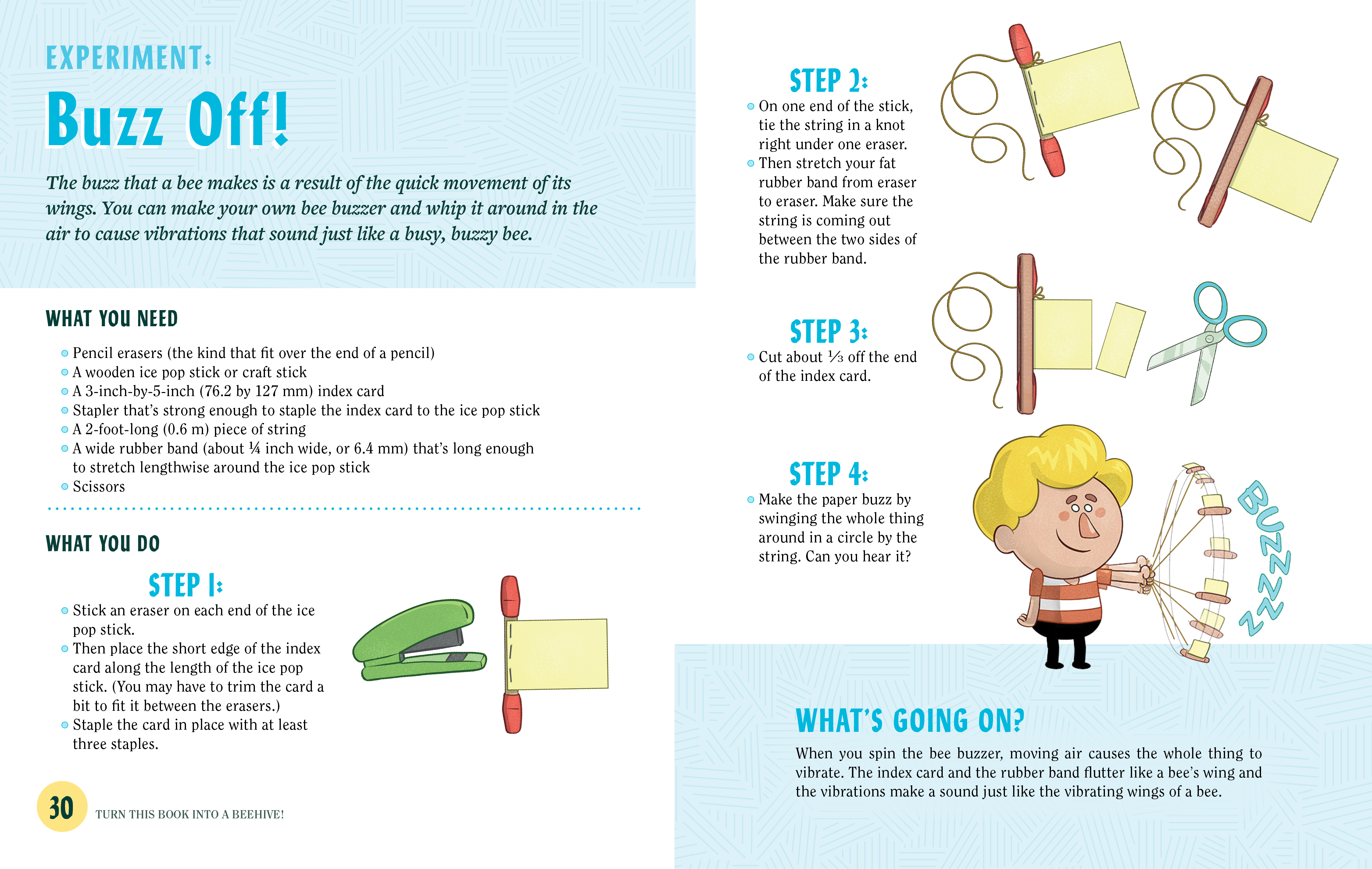Turn This Book Into a Beehive! And 19 Other Experiments and Activities That Explore the Amazing World of Bees
Author: Lynn Brunelle
Illustrator: Anna-Maria Jung
Published April 3rd, 2018 by Workman Publishing
Summary: What a promise! Actually, promises. First, here’s a book that teaches kids all about the fascinating world of bees. Second, fun exercises, activities, and illustrations engage the imagination and offer a deeper understanding of bee life and bee behavior. Third, by following a few simple steps including removing the book’s cover and taping it together, readers can transform the book into an actual living home for backyard bees. Fourth, added all together,Turn This Book Into a Beehive! lets kids make a difference in the world—building a home where bees can thrive is one small but critical step in reversing the alarming trend of dwindling bee populations.
Turn This Book Into a Beehive!introduces kids to the amazing mason bee, a non-aggressive, non-stinging super-pollinator that does the work of over 100 honeybees. Mason bees usually live in hollow reeds or holes in wood, but here’s how to make a home just for them: Tear out the perforated paper—each illustrated as a different room in a house—roll the sheets into tubes, enclose the tubes using the book’s cover, and hang the structure outside. The bees will arrive, pack mud into the tubes, and begin pollinating all the plants in your backyard.
Twenty experiments and activities reveal even more about bees—how to smell like a bee, understand the role of flowers and pollen, learn how bees communicate with each other through “dance,” and more. It’s the real buzz on bees, delivered in the most ingenious and interactive way.
About the Author: Lynn Brunelle is a four-time Emmy Award–winning writer for Bill Nye the Science Guy and author of over 45 books, including the bestselling Pop Bottle Science and Camp Out! She is a regular contributor to KING-TV’s New Day Northwest as a family science guru and NPR’s Science Friday.
Q&A with Author, Lynn Brunelle:
Unleashing Readers: How did you research and learn more about the mason bee?
Lynn Brunelle: First I went to garden stores and asked around about bees.
I learned that honeybees and social bees were only 2% of the bees on the world. 98% of the bees are solitary wild bees that do amazing work as pollinators. I saw some of the houses these garden centers were selling to attract these bees. Then I went online and did some digging. All honeybees are domesticated and were brought here by colonists. In fact honeybees have been domesticated for a loooooooong time! There are images of beekeepers carved into caves, chiseled into Egyptian art, painted on Greek pottery and minted into Roman coins.
The solitary bees like mason bees are native bees and they’re amazing pollinators. I found experts as well. I contacted the USDA mason bee lab in Utah and spoke with bee people from around the country. It was so interesting and really exciting to learn so much.
Then I made my prototype of a book-turned-hive and stuck it out in my garden. Mason bees came! It worked; my garden has never been so productive!!
UR: How did you generate the activities within the book?
LB: My favorite thing is to make big concepts accessible to people of all ages, especially kids. And I think using laughter and hands-on fun is a great way for kids to really understand a concept. So when I was writing all of the amazing things about bees, I was always keeping in mind what kind of hands-on activity I could share for kids to really absorb the content. The fact that bees are positively charged and flowers are negatively charged and that makes pollen leap to a bee is FANTASTIC! And you can show that with a balloon and confetti. The fact that bees are amazing smellers is a perfect lead-in for getting kids to tune into their own sense of smell.
UR: Which activity is your favorite?
LB: It’s the actual making of the mason bee home that I love. Turning the book into a hive and watching as things unfold in the garden.
With mason bees, every girl’s a queen—like a single mom she finds the house—usually a hollow reed or stem or any tube—even paper ones in an inside out book cover!!! She gathers food, makes a pile of food, lays an egg on top of the food pile and then gathers mud to spackle a wall. In a good hollow tube, she can make 6-10 little rooms with an egg and a food supply in each one.
UR: What’s something else we might learn about you, either as a writer or as a person?
LB: I love my job! I get to learn about new things and share them every day. I love the outdoors. My family and I love hiking through the woods with the dogs, kayaking on the water and paddle boarding in the summer. We enjoy camping and exploring. I have a happy garden, I make jewelry and fused glass and am learning how to weld. My sons and I play the ukulele. They are teaching me to tell the difference between rap artists and I play the trombone. I make a great hummus and am getting better at rolling sushi with the help of my patient husband.
We Flagged:
Thank you to Lynn Brunelle and Workman Press for this interview!





